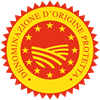Description
The Coco de Paimpol PDO is a medium-dry bean for shelling, coming in its pod, belonging to the species Phaseolus vulgaris L.
Production Area
The production area of the Coco de Paimpol PDO includes 85 municipal areas in the north of the Côtes-d'Armor department in the Brittany region.
Production Method
Bean planting must be carried out in rows and harvesting extends from July to November. Harvesting and selection of the pods are done manually after the plants have been uprooted. From the time when they are conditioned until they are dispatched, the beans are preserved in packaging which prevents the beans from heating or drying out, using the coldmoist storage technique.
Appearance and Flavour
The Coco de Paimpol PDO is characterised by pale yellow pods mottled with violet, their seeds are uniformly white and ovoid with a seed coat which is very thin. It has a characteristic flowery and dried fruit flavour.
History
The history of Coco de Paimpol PDO is related to the horticultural tradition of the Paimpol region. Coco de Paimpol production was confined to gardens until 1939. After that, from 1948, harvesting and marketing of this bean was better organised: the beans were first sold dry and then semi-dry, which turned out to be more profitable. The quality of the product is widely recognised and the Paimpol region today accounts for most of the national production of semi-dry beans for shelling.
Gastronomy
The Coco de Paimpol PDO is preserved frozen, which allows to preserve all its characteristics for some months. It is preserved also medium-dry, for some days, in fresh and dry places. Its cooking is especially quick, it does not need to be soaked. It is cooked in fresh water, for 30-40 minutes after boiling. At the end, beans must be intact, soft and pumped, without rests of cooking water. Greenish beans have vegetable flavour, whereas white beans have peanut or chestnut flavour. Seasoned with oil and pepper, or together with other legumes and vegetables, they are ideal as starters or side-dishes. They can be combined with smoked sausages, with foie gras in the pan or with domestic fowl meat. An excellent purée can be obtained. Medium-dry Coco de Paimpol PDO is tenderer, it can be cooked quickly and it is more digestible.
Marketing
The product is sold as Coco de Paimpol PDO. It is marketed in different containers on which there is a label with the initial AOP, the community logo and the identification of the conditioning plant and the producer. The label must remain on the product packaging until the final distributor.
Distinctive Features
The Coco de Paimpol owes its fame to the skill of its producers, who have preserved the traditional cultivation techniques, in particular manual harvesting. In addition, the maximum summer temperatures allow the pods to ripen well and to have an excellent appearance, whereas the low temperature range in this region enables the bean plants to ripen slowly and well, which is necessary in order to obtain a high-quality product.






